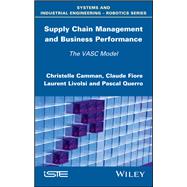Against this current trend of low growth and high uncertainty, business directors must work with their shareholders to set strategic objectives and define business models.
The great number of possible strategies makes this type of management very complex, and the actual deployment of strategic choices is often limited by a lack of overall coherence within the organization.
This problem calls for an appropriate and renewed response. In strategic management today, a closer, permanent dialogue is needed between operational and financial performance.
Based on a supply chain approach, the Value Added Supply Chain (VASC) model focuses on driving operational performance, but aims to achieve a greater and more dynamic integration between these two dimensions of the company's value creation.









